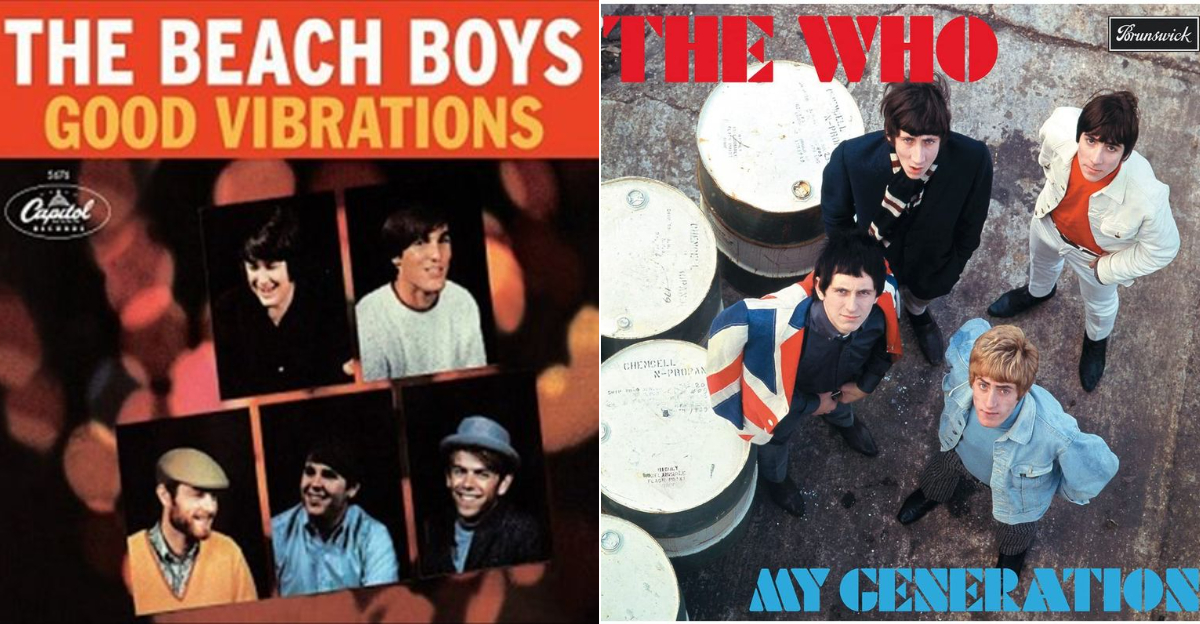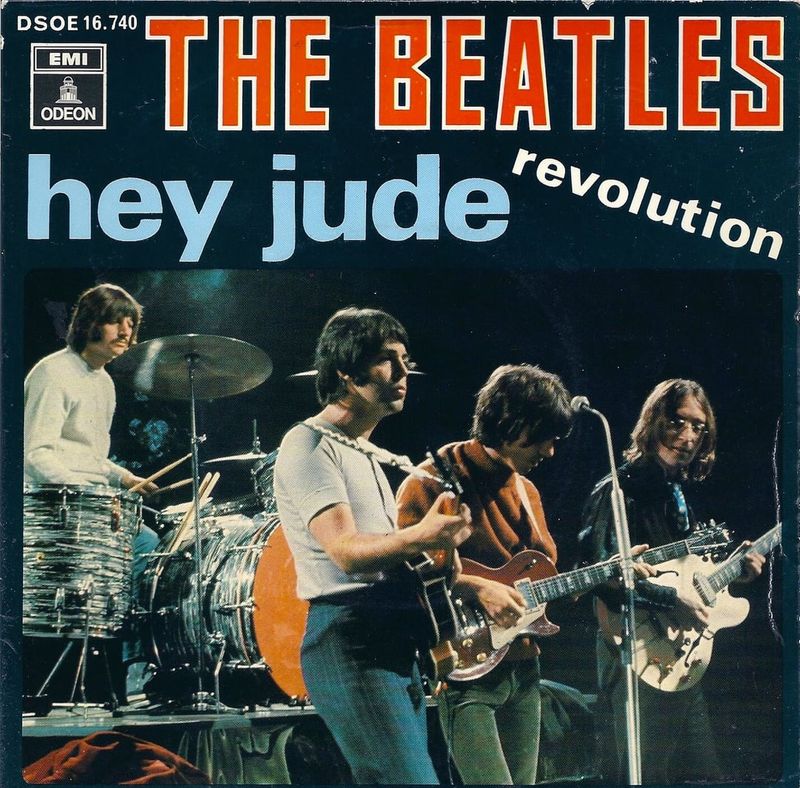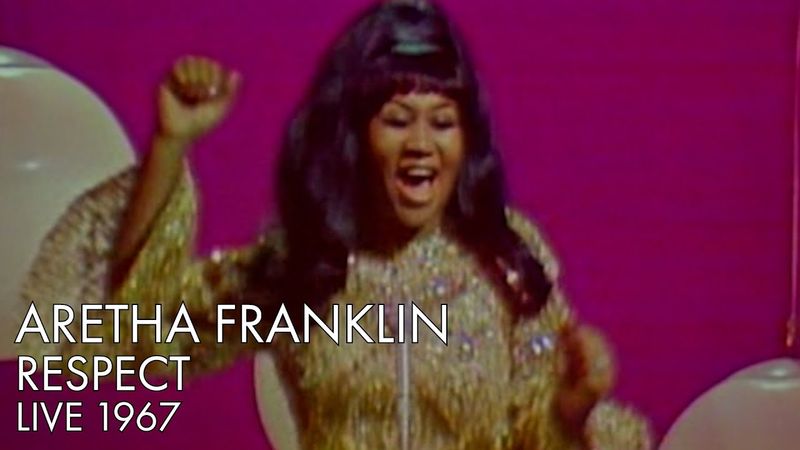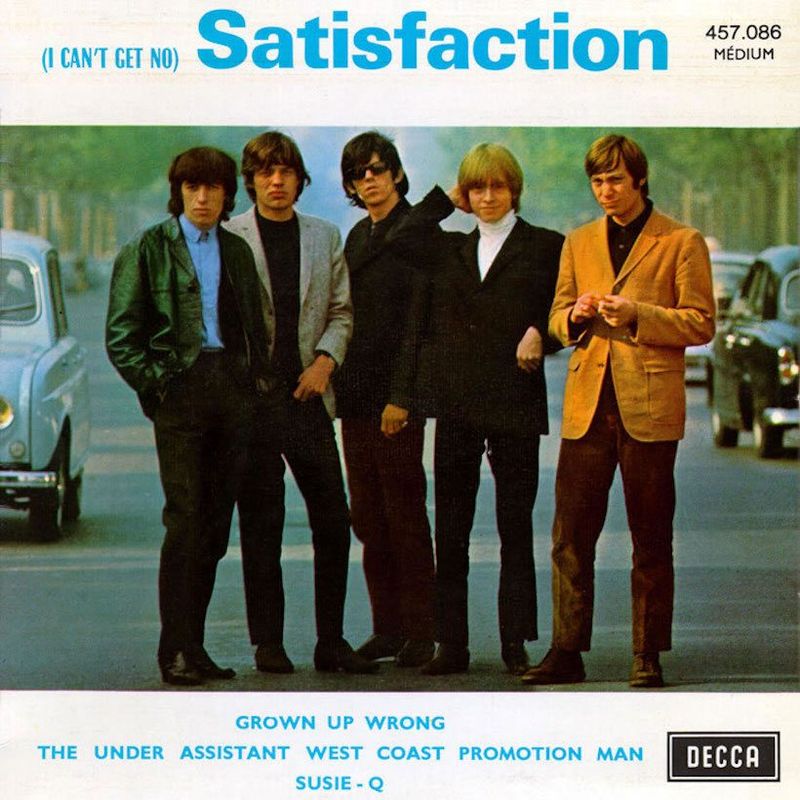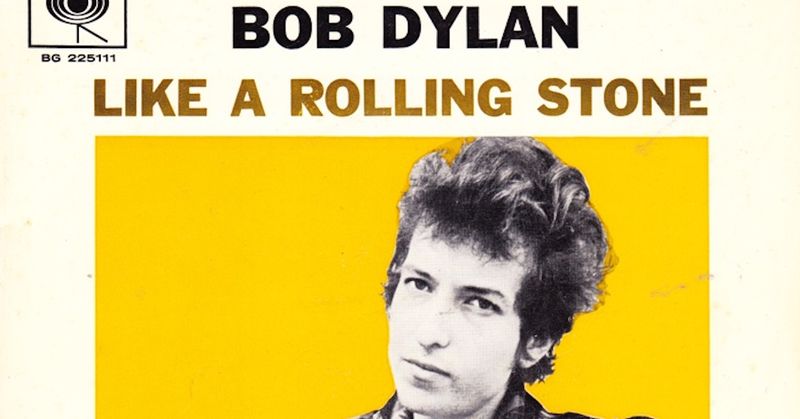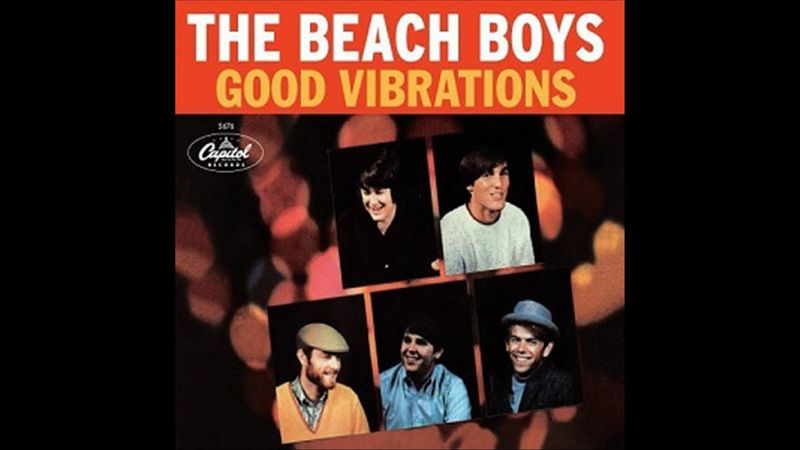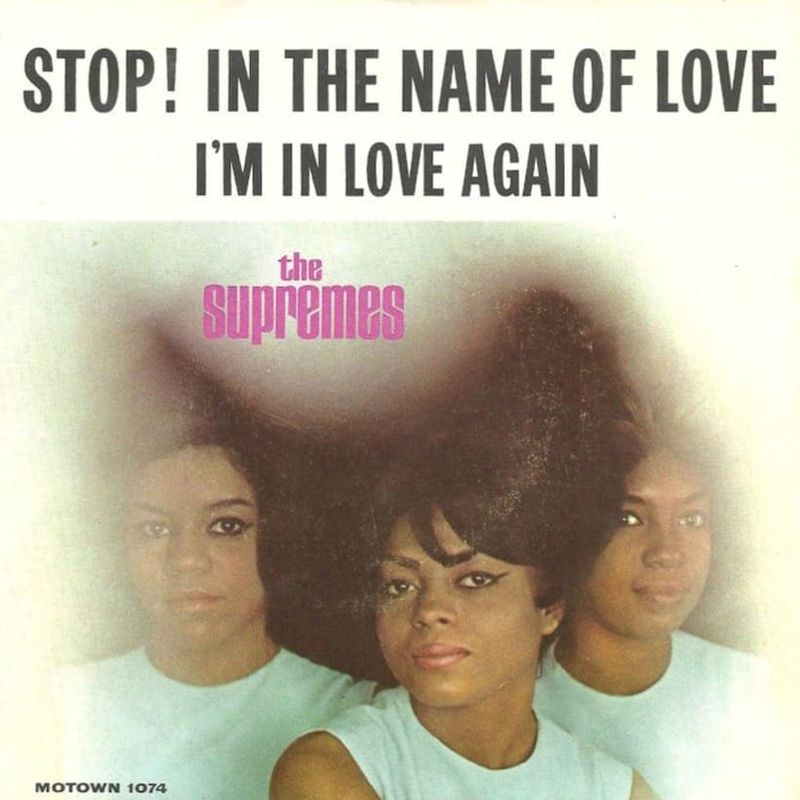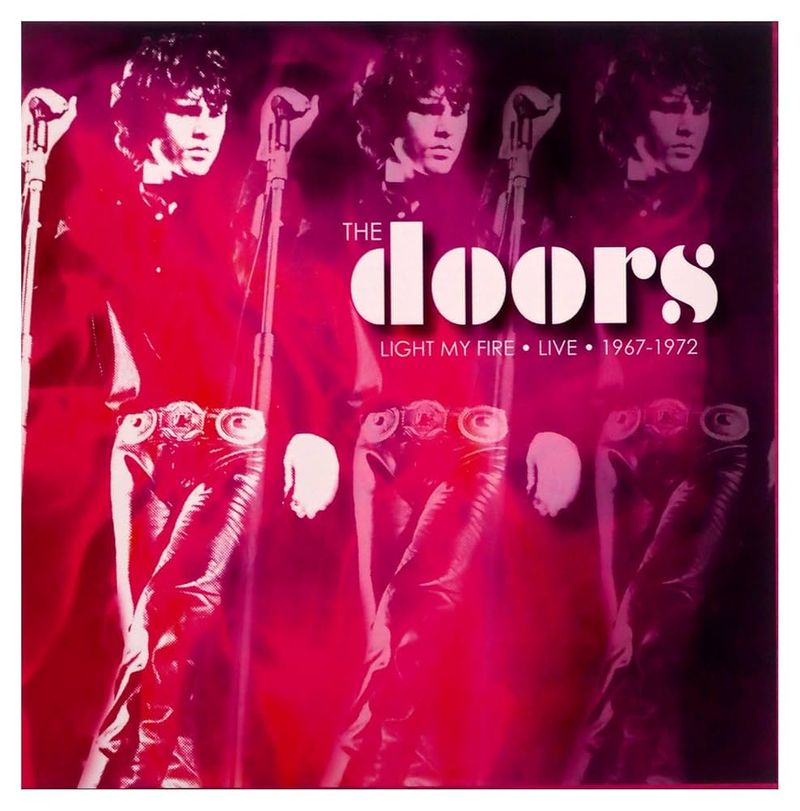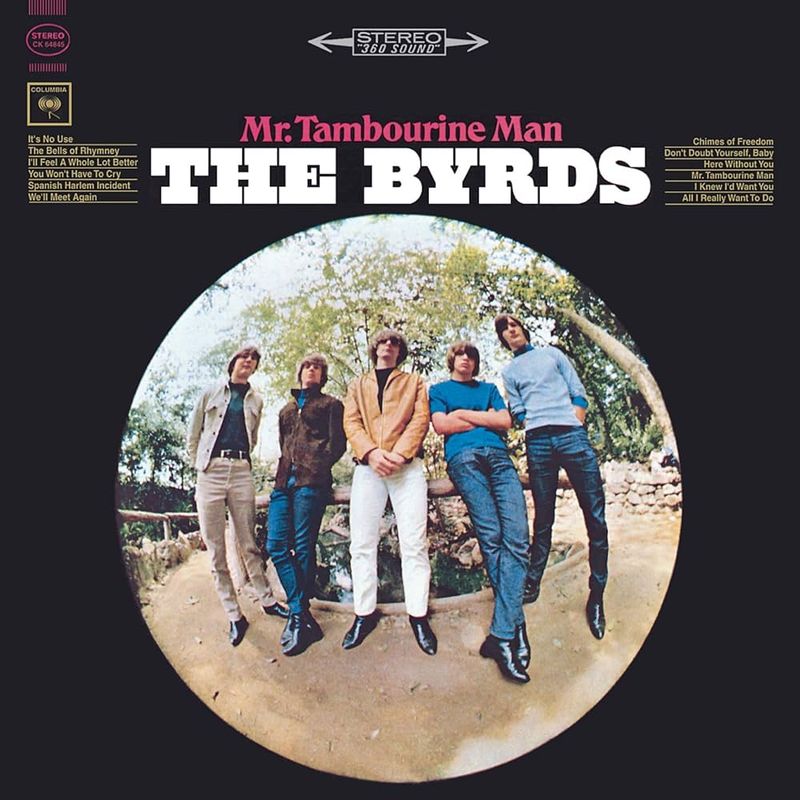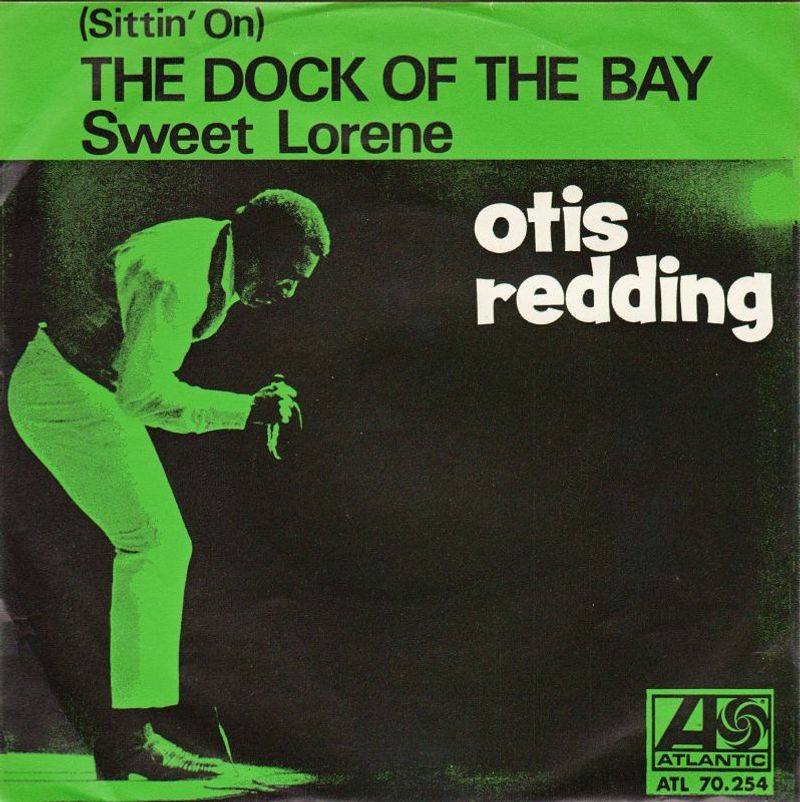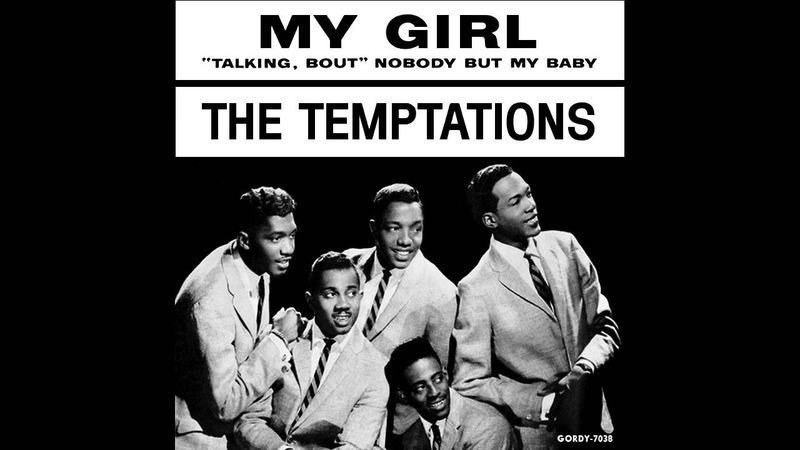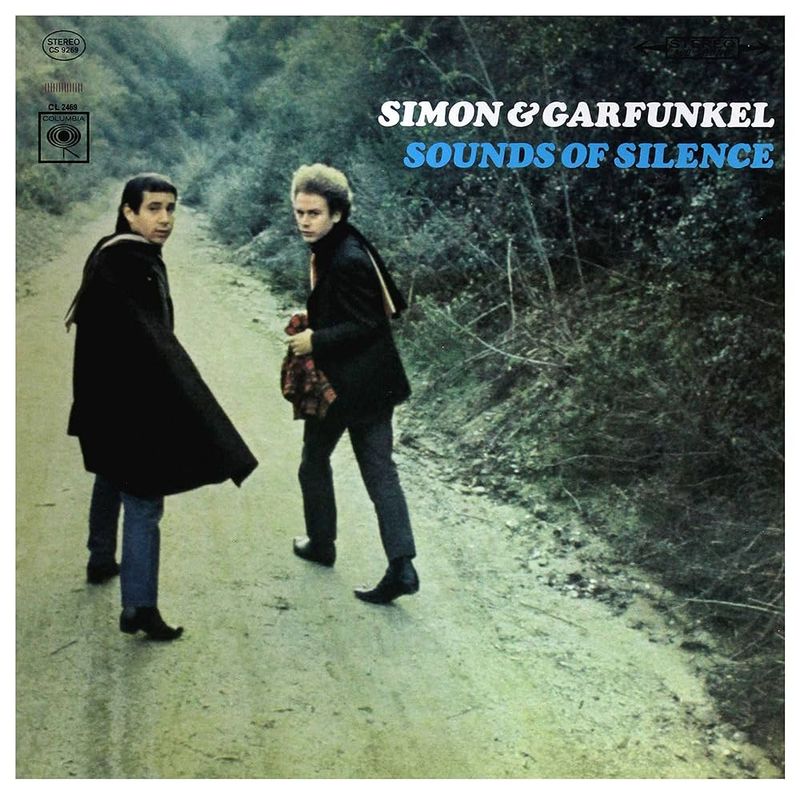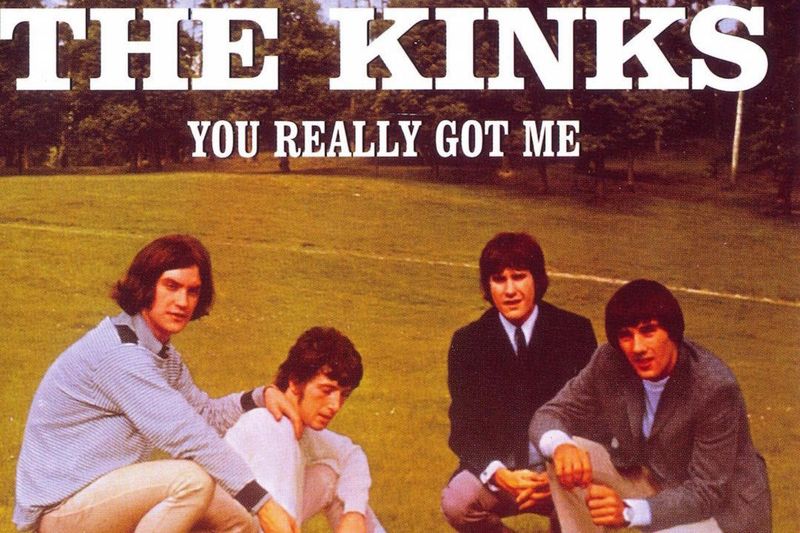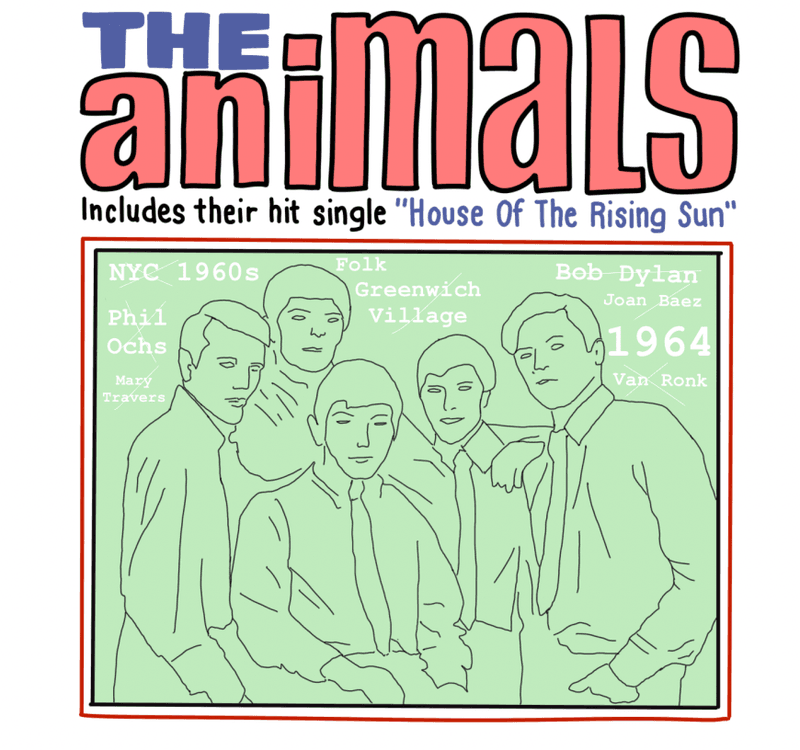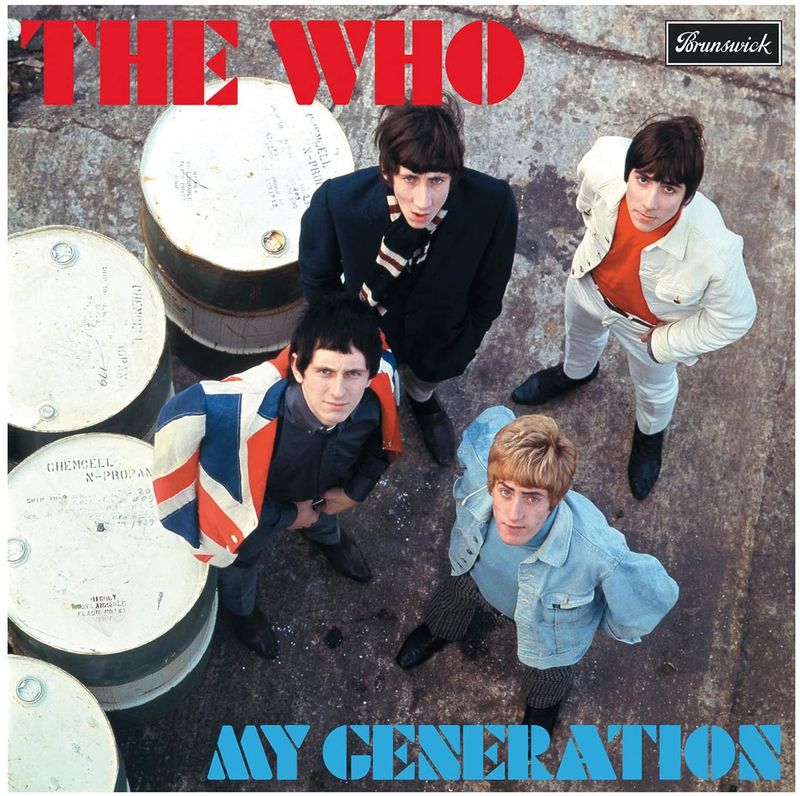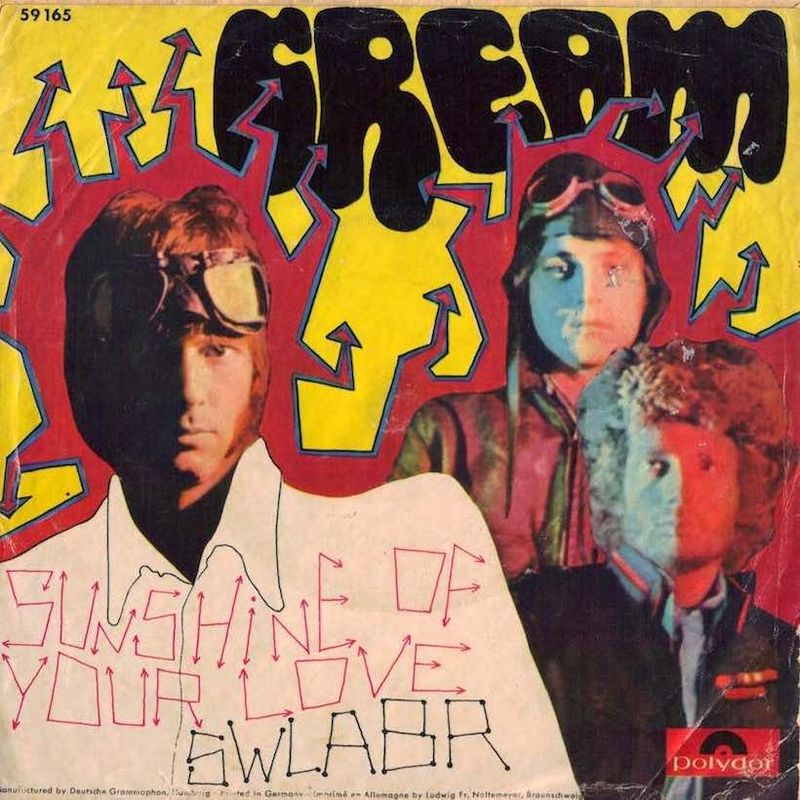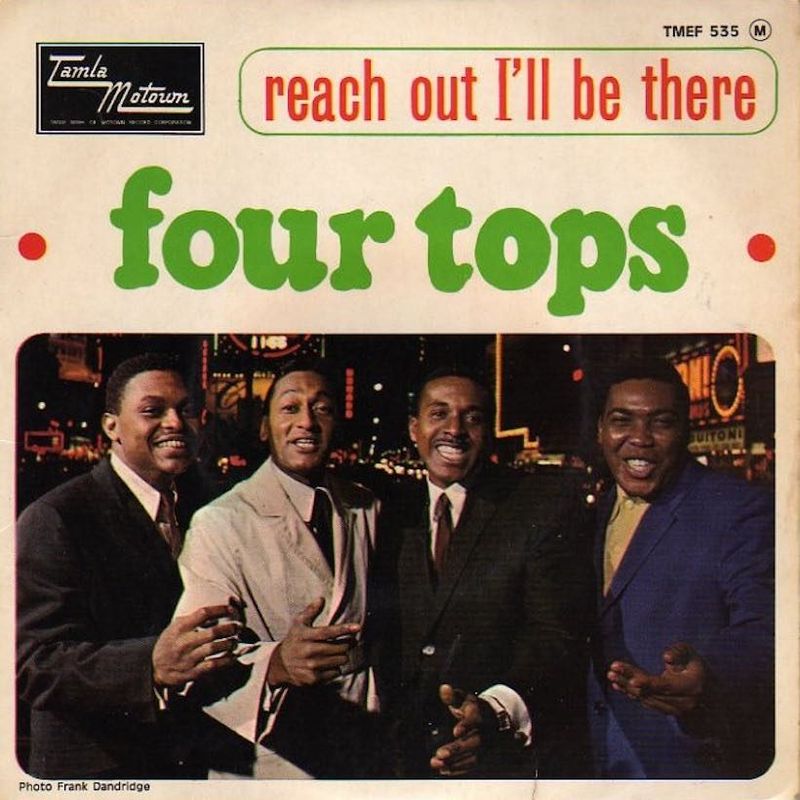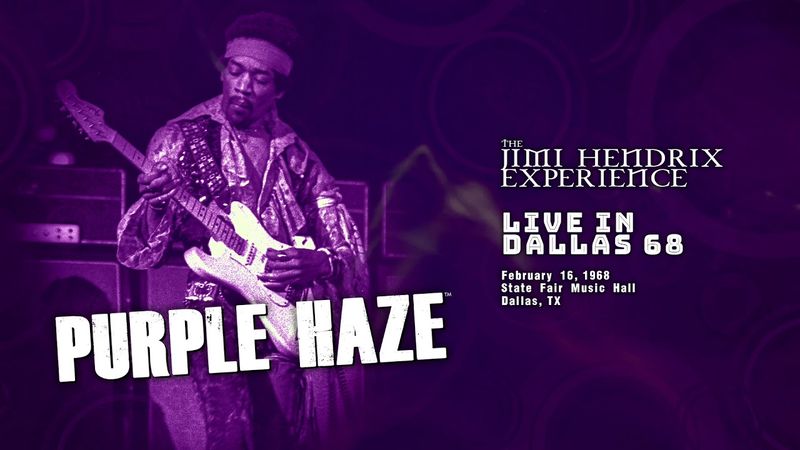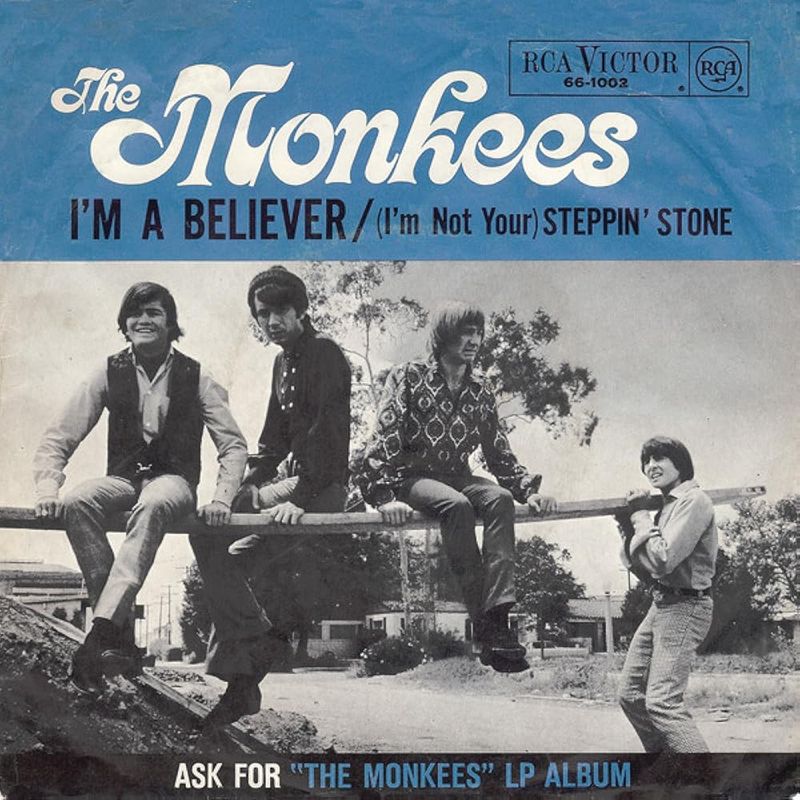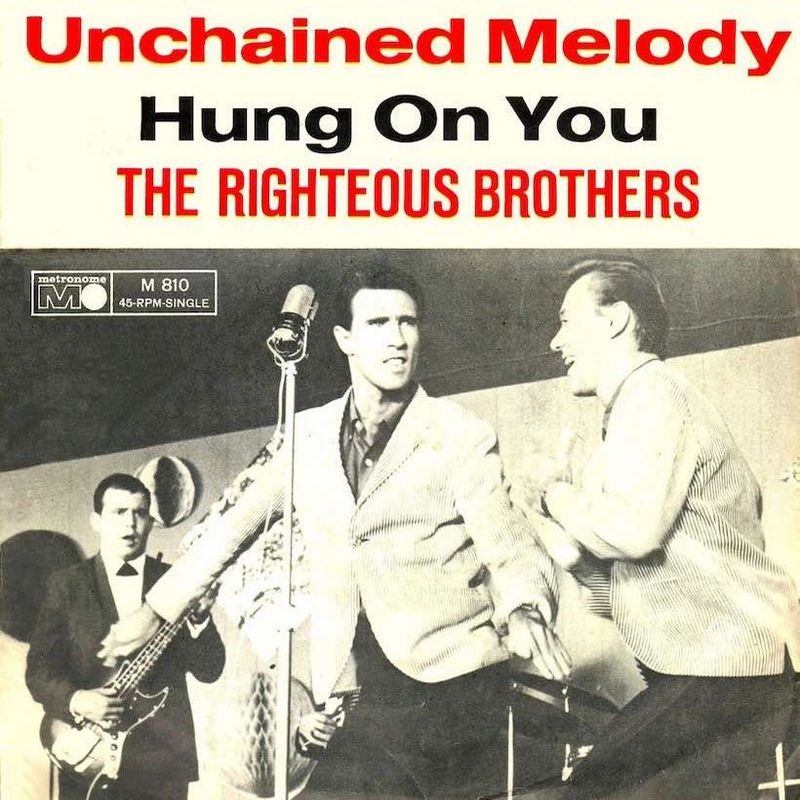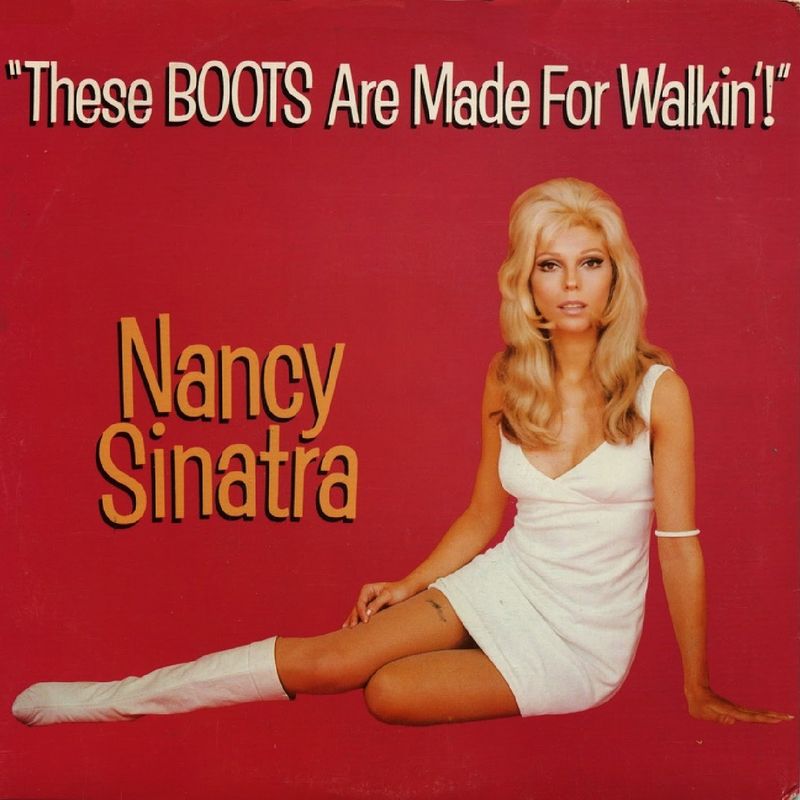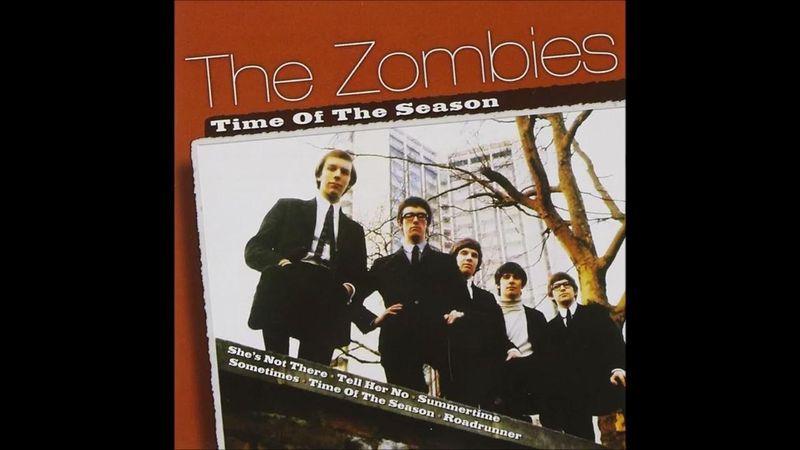The 1960s was a revolutionary decade for music, marked by songs that not only defined a generation but continue to evoke deep emotions and nostalgia. This era’s songs were more than mere entertainment; they were anthems of change, symbols of rebellion, and voices of hope. From the soulful demands of Aretha Franklin to the psychedelic explorations of The Beatles, these tracks have transcended time, influencing countless artists and captivating listeners across generations. Here, we delve into 25 iconic songs from the 1960s that remain etched in our collective memory, each bringing chills with every note.
1. The Beatles – “Hey Jude” (1968)
In 1968, Paul McCartney penned “Hey Jude,” a song initially meant to comfort John Lennon’s son, Julian, during his parents’ divorce. The track, with its soothing melody and uplifting message, quickly became an anthem for unity and healing. Its most remarkable feature is the epic sing-along “na-na-na” outro that seems to echo endlessly. This part of the song encapsulates the spirit of the 60s, where communal experiences mattered. Even today, “Hey Jude” resonates with audiences around the world, offering solace and connection. Did you know? It was the first song ever released on Apple Records, The Beatles’ own label.
2. Aretha Franklin – “Respect” (1967)
Aretha Franklin’s “Respect” became an empowering anthem for women and civil rights in 1967, though originally written by Otis Redding. Franklin’s rendition, with its dynamic vocals and commanding presence, transformed the song’s meaning, emphasizing personal and collective strength. The iconic spelling of “R-E-S-P-E-C-T” became a powerful call for equality. This track not only established Franklin as the Queen of Soul but also influenced future generations of artists. Her interpretation of “Respect” remains a symbol of empowerment and defiance, celebrating individuality and dignity across all boundaries. Interestingly, the song was recorded in just two takes—a testament to Franklin’s brilliance.
3. The Rolling Stones – “(I Can’t Get No) Satisfaction” (1965)
With its unforgettable guitar riff, The Rolling Stones’ “(I Can’t Get No) Satisfaction” became a defining rock anthem of the 1960s. Released in 1965, the song encapsulated the era’s discontent with consumer culture and commercialism. Mick Jagger’s dynamic and rebellious vocals, paired with Keith Richards’ innovative fuzz-guitar sound, created a raw, exciting experience for listeners. This track became a symbol of youthful defiance and remains one of the most celebrated songs in rock history. Its influence can still be felt today, inspiring countless musicians. Fun fact: Richards reportedly composed the iconic riff in his sleep, capturing it on a portable tape recorder.
4. Bob Dylan – “Like a Rolling Stone” (1965)
Bob Dylan’s “Like a Rolling Stone,” released in 1965, marked a turning point in music history. The song’s introspective and poetic lyrics challenged the conventions of popular music, redefining what a hit single could be. At over six minutes long, it defied radio norms yet captivated listeners with its raw emotion and complexity. Dylan’s innovative storytelling and unique voice combined to create an enduring masterpiece. This track symbolized the spirit of change sweeping through the decade. Did you know? “Like a Rolling Stone” was voted the greatest song of all time by Rolling Stone magazine, cementing Dylan’s legacy as a cultural icon.
5. The Beach Boys – “Good Vibrations” (1966)
The Beach Boys’ “Good Vibrations,” released in 1966, is considered one of the most innovative pop songs of all time. Brian Wilson’s visionary approach to production resulted in a complex and enchanting track that combined rich harmonies, unusual instruments, and a psychedelic vibe. The song’s intricate structure and contrasting sections create a sense of euphoria and timelessness. Its upbeat energy and groundbreaking sound captured the spirit of the era, influencing countless artists and genres. Interestingly, “Good Vibrations” was recorded over several months in various studios, a testament to Wilson’s dedication to crafting the perfect sound.
6. The Supremes – “Stop! In the Name of Love” (1965)
Released in 1965, “Stop! In the Name of Love” by The Supremes became an instant Motown classic. The song’s catchy melody and engaging lyrics were complemented by the trio’s flawless harmonies and synchronized choreography. Diana Ross’s distinctive voice led the narrative of a lover pleading for understanding and reconciliation. The iconic hand gesture, mimicking a traffic cop’s stop sign, became synonymous with the song. This track not only solidified The Supremes’ status as Motown legends but also paved the way for future girl groups. A fascinating tidbit: this was one of the many hits written by the legendary Holland-Dozier-Holland songwriting team.
7. The Doors – “Light My Fire” (1967)
In 1967, The Doors captivated audiences with “Light My Fire,” a song that quickly became a psychedelic rock anthem. Jim Morrison’s sultry vocals and the hypnotic organ solo by Ray Manzarek defined the track’s allure. Its extended instrumental break showcased the band’s improvisational prowess, creating a mesmerizing experience for listeners. “Light My Fire” captured the free-spirited and exploratory ethos of the 60s, leaving a lasting impact on music culture. The track’s success propelled The Doors to international fame. Did you know? Despite its initial lengthy runtime, the song was edited for radio play, yet both versions remain popular among fans.
8. The Mamas & The Papas – “California Dreamin’” (1965)
Released in 1965, “California Dreamin'” by The Mamas & The Papas is a quintessential folk-rock song that evokes the longing for warmth and sunshine. Its haunting melody and rich harmonies paint a vivid picture of yearning for a better place. The track’s timeless appeal lies in its ability to convey universal feelings of nostalgia and desire. As an anthem for the West Coast’s idyllic lifestyle, it resonated deeply during a time of change. Did you know? The song was inspired by the real-life experiences of John and Michelle Phillips, who wrote it during a cold New York winter.
9. The Byrds – “Mr. Tambourine Man” (1965)
In 1965, The Byrds transformed Bob Dylan’s “Mr. Tambourine Man” into a folk-rock masterpiece. Their jangly 12-string guitar sound and harmonious vocals created a fresh, vibrant interpretation that captivated listeners. The song’s dreamy and introspective lyrics resonated with the counterculture movement, symbolizing a quest for freedom and enlightenment. This track marked a significant moment in music history, bridging the gap between folk and rock. Fun fact: The Byrds’ version of “Mr. Tambourine Man” was one of the first folk-rock hits to reach number one on the Billboard Hot 100 chart, cementing their place in music lore.
10. Otis Redding – “(Sittin’ On) The Dock of the Bay” (1968)
Otis Redding’s “(Sittin’ On) The Dock of the Bay,” recorded just days before his tragic death in 1967, is a soulful reflection on life and longing. Released posthumously in 1968, the song’s tranquil melody and melancholic lyrics captured the essence of introspection. Redding’s emotive vocals convey a deep sense of yearning and contemplation, resonating with listeners worldwide. This timeless classic became Redding’s signature song and a poignant reminder of his immense talent. Intriguingly, the track’s distinctive whistling outro was an impromptu addition, as Redding had forgotten the lyrics he intended to sing.
11. The Temptations – “My Girl” (1965)
In 1965, The Temptations released “My Girl,” a song that quickly became a Motown classic. Written by Smokey Robinson and Ronald White, its irresistible melody and heartfelt lyrics celebrated love and admiration. David Ruffin’s smooth vocals added a layer of warmth and sincerity, creating an unforgettable listening experience. “My Girl” not only topped the charts but also became an enduring symbol of romance, cherished by generations. Interestingly, the iconic bass line that opens the song was suggested by Ruffin himself, demonstrating the collaborative spirit that made The Temptations legendary.
12. Simon & Garfunkel – “The Sound of Silence” (1964/1965)
“The Sound of Silence” by Simon & Garfunkel, initially released in 1964 and re-recorded with electric instruments in 1965, became a haunting anthem of the decade. Paul Simon’s introspective lyrics reflected themes of alienation and communication breakdown, resonating with the era’s social upheavals. The song’s haunting melody and harmonious vocals create a poignant listening experience. The duo’s ability to convey deep emotions through their music made them icons of the 60s folk-rock scene. Did you know? The song gained popularity after being featured in the film “The Graduate,” cementing its place in pop culture history.
13. The Kinks – “You Really Got Me” (1964)
“You Really Got Me,” released in 1964 by The Kinks, is celebrated for its raw, distorted guitar riff that laid the groundwork for hard rock and heavy metal. Ray Davies’ powerful vocals and the song’s driving rhythm created an electrifying energy that captivated audiences. This track broke new ground, pushing the boundaries of conventional rock and inspiring future generations of musicians. Its success propelled The Kinks to international fame and solidified their place in rock history. Fun fact: The iconic guitar sound was achieved by slicing an amplifier’s speaker cone, creating the distinctive distortion heard in the song.
14. Marvin Gaye – “I Heard It Through the Grapevine” (1968)
Marvin Gaye’s “I Heard It Through the Grapevine,” released in 1968, is a slow-burning soul masterpiece. The song’s intense emotion and poignant lyrics, about betrayal and suspicion, resonate deeply with listeners. Gaye’s powerful and nuanced vocal delivery captures the heartache and turmoil of the narrative. This track became one of Motown’s biggest hits and solidified Gaye’s status as a soul legend. Interestingly, Gaye’s version was recorded before Gladys Knight & the Pips’ rendition, but its release was delayed, creating a unique legacy for both interpretations.
15. The Animals – “House of the Rising Sun” (1964)
“House of the Rising Sun” by The Animals, released in 1964, is renowned for its haunting organ intro and Eric Burdon’s gritty vocals. This traditional folk song, reimagined as a bluesy rock ballad, tells a cautionary tale of life gone astray. Its timeless appeal lies in the raw emotion and atmospheric instrumentation that transports listeners to another world. The song’s success propelled The Animals to international fame and left a lasting impact on rock music. Did you know? It was one of the first songs recorded entirely in a single take, a testament to the band’s exceptional musicianship.
16. The Ronettes – “Be My Baby” (1963)
In 1963, The Ronettes released “Be My Baby,” a song that became the epitome of Phil Spector’s “Wall of Sound” production. Ronnie Spector’s captivating vocals, combined with lush orchestration and powerful percussion, created an unforgettable listening experience. The song’s infectious melody and heartfelt lyrics made it an instant classic, influencing countless artists and shaping the sound of the era. “Be My Baby” continues to be celebrated for its innovative production and timeless charm. Interestingly, it’s said that Brian Wilson of The Beach Boys considered it the greatest pop record ever made, a testament to its enduring impact.
17. The Who – “My Generation” (1965)
Released in 1965, “My Generation” by The Who became an anthem for youthful rebellion. Pete Townshend’s defiant lyrics and the iconic line “Hope I die before I get old” captured the spirit of 60s counterculture. The song’s raw energy, featuring a powerful bass solo and dynamic drumming, resonated with a generation seeking change. “My Generation” solidified The Who’s place in rock history and influenced countless musicians. Did you know? The song’s characteristic stutter was intended to reflect the frustration and excitement of youth, adding to its unique and rebellious tone.
18. Cream – “Sunshine of Your Love” (1967)
Cream’s “Sunshine of Your Love,” released in 1967, is renowned for its iconic guitar riff that became a defining moment in rock music. Eric Clapton’s masterful guitar work, combined with Jack Bruce’s haunting vocals and Ginger Baker’s dynamic drumming, created a powerful and enduring track. The song’s blend of blues and psychedelic rock captured the essence of the era, influencing future generations of musicians. Its raw energy and captivating melody continue to resonate with listeners today. Fun fact: The song was inspired by a late-night jam session following a Jimi Hendrix concert, highlighting the interconnectedness of 60s rock legends.
19. The Four Tops – “Reach Out I’ll Be There” (1966)
Released in 1966, “Reach Out I’ll Be There” by The Four Tops became an emblem of Motown’s powerful and emotional sound. Levi Stubbs’ passionate vocals, combined with the song’s driving rhythm and orchestration, created a compelling and uplifting experience for listeners. The track’s themes of support and solidarity resonated deeply, establishing it as a timeless classic. Its innovative structure and dynamic energy captured the spirit of the 60s, influencing countless artists. Interestingly, the song’s dramatic arrangement was inspired by classical music, showcasing Motown’s creative experimentation and versatility.
20. The Jimi Hendrix Experience – “Purple Haze” (1967)
Jimi Hendrix’s “Purple Haze,” released in 1967, became a groundbreaking psychedelic rock anthem. The song’s innovative guitar techniques, including Hendrix’s use of feedback and distortion, redefined the possibilities of electric guitar playing. Its enigmatic lyrics and powerful sound captivated audiences, cementing Hendrix’s status as a guitar legend. “Purple Haze” epitomized the experimental and boundary-pushing spirit of the 60s, inspiring countless musicians. Did you know? Despite its complex sound, the song was composed in just a few minutes during a backstage session, highlighting Hendrix’s extraordinary creativity and talent.
21. The Monkees – “I’m a Believer” (1966)
“I’m a Believer,” performed by The Monkees and released in 1966, became an instant bubblegum pop hit. Written by Neil Diamond, the song’s catchy melody and upbeat lyrics captured the carefree spirit of the mid-60s. Its infectious energy and whimsical charm endeared it to fans worldwide, making it a chart-topping success. The Monkees’ television show helped propel the song’s popularity, creating a cultural phenomenon. Fun fact: “I’m a Believer” was one of the first pop songs to feature a music video, a testament to The Monkees’ innovative approach to blending music and visual entertainment.
22. Dusty Springfield – “Son of a Preacher Man” (1968)
Released in 1968, “Son of a Preacher Man” by Dusty Springfield became an emblem of sultry soul and pop crossover. The song’s narrative of forbidden romance, combined with Springfield’s smoky voice and evocative delivery, created a timeless classic. Its blend of gospel and soul influences captured the essence of the late 60s music scene. “Son of a Preacher Man” remains one of Springfield’s most celebrated tracks, showcasing her ability to convey deep emotion and storytelling. Did you know? The song was originally offered to Aretha Franklin, but Springfield’s version became the definitive recording, solidifying her place in music history.
23. The Righteous Brothers – “Unchained Melody” (1965)
“Unchained Melody” by The Righteous Brothers, released in 1965, remains one of the most enduring love ballads of all time. Bobby Hatfield’s soaring vocals and the song’s haunting melody create a mesmerizing and emotional experience. Originally composed for a film, the track’s timeless appeal has captivated audiences across generations. Its inclusion in the movie “Ghost” gave it renewed popularity in the 1990s, further cementing its place in pop culture. Did you know? Despite its frequent association with The Righteous Brothers, “Unchained Melody” has been covered by numerous artists, each adding their unique touch to this enduring classic.
24. Nancy Sinatra – “These Boots Are Made for Walkin’” (1966)
In 1966, Nancy Sinatra released “These Boots Are Made for Walkin’,” a song that captured the essence of empowerment and independence. Its catchy beat and bold lyrics made it an anthem for strong, self-assured women. Sinatra’s confident delivery and the track’s playful yet assertive tone resonated with audiences, establishing her as a style icon. The song’s memorable music video, featuring Sinatra in go-go boots, became a cultural touchstone of the 60s. Interestingly, the track was written by Lee Hazlewood, who encouraged Sinatra to take on a more commanding persona, adding to its iconic status.
25. The Zombies – “Time of the Season” (1968)
Released in 1968, “Time of the Season” by The Zombies captures the essence of late-60s psychedelia. The song’s complex arrangement, featuring hypnotic rhythms and jazzy undertones, creates a captivating and timeless experience. Colin Blunstone’s soothing vocals and the track’s introspective lyrics resonate deeply, embodying the spirit of exploration and change. Despite its initial underwhelming reception, the song gained popularity over time, becoming a beloved classic. Did you know? “Time of the Season” was recorded during the last sessions of The Zombies’ album “Odessey and Oracle,” marking a poignant end to the band’s original lineup.
